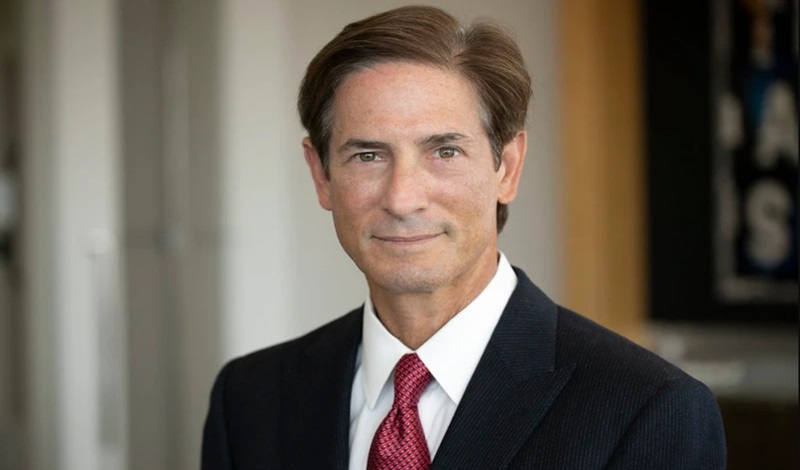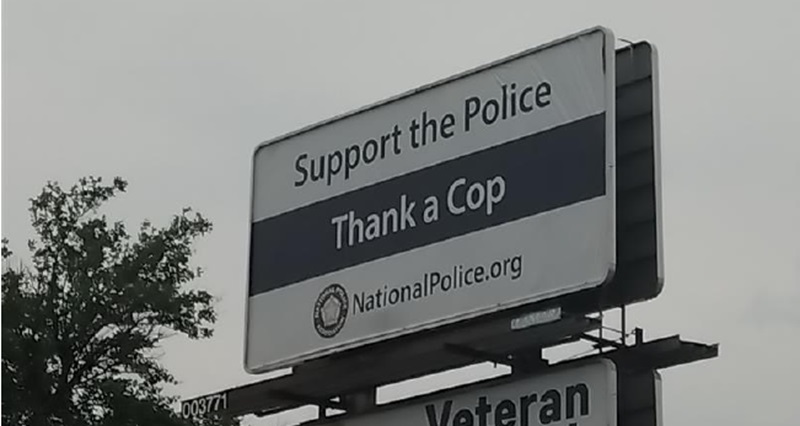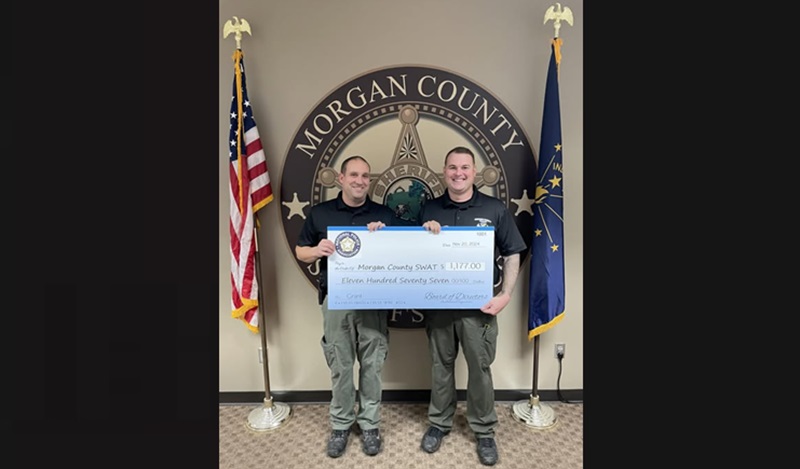
Everyone expects a competent, physically fit law enforcement officer to show up when they need a police response to problems they are encountering. Especially nowadays, with all the monstrous behavior thrust at cops at just about every turn (thanks to politics dipping the fuse in gasoline), first responders must sidestep frazzle, maintain mental equilibrium, and show up on-scene with apparent physical stature to contend foes who want to fight.
Before, during, and after the rigorous training provided by police academies, officers must be mindful of maintaining healthy habits that underscore capabilities when myriad circumstances evolve and failure in any form is never an option.
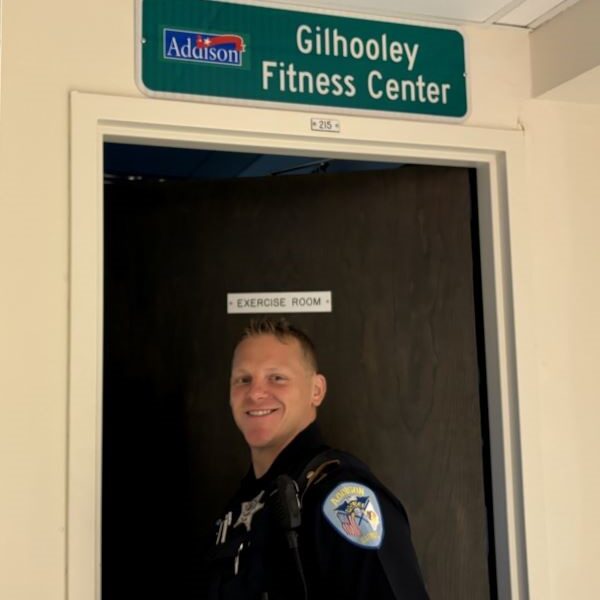
(Photo courtesy of the Addison Police Department.)
Many of the social media posts from law enforcement agencies proudly display their latest batch of newly minted cops: each cadet is neatly pressed, postured like a proud graduate, conditioned like a US Marine saluting boot camp drill instructors, and elatedly pinned with a star or shield symbolizing justice practitioners.
Physical conditioning attributes are heavily harped on Day One of the police academy and throughout the entire experience.
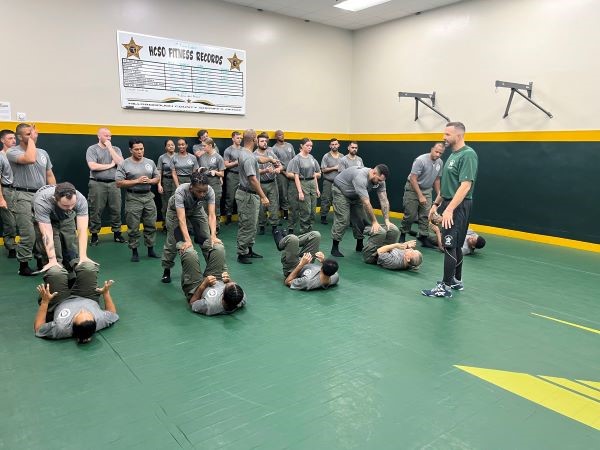
(Photo courtesy of the Hillsborough County Sheriff’s Office.)
Pre-academy processing is not much different. Every law enforcement organization spells out and publishes the fundamental physical requirements each prospective recruit must pass to be considered for further processing in the overall hiring sequence.
Police recruiters eyeing viable candidates justifiably echo the requisite top-tier physicality in policing, underscoring that prospective cadets would be wise to mimic exercise routines coupled with healthy nutrition adding up to inherent mental acuity for mission success. Some might call it a brew of brains and brawn.
Via the cops I formally interviewed or with whom I had a spontaneous conversation about mental health challenged by the ever-churning demands of The Job, most excitedly elaborate about their workout routines (it is visually impressive) and champion physical conditioning regimens as a go-to remedy to offset mounds of stress. All the feel-good chemicals brewed in/by the brain are released…a deserved reward for taking ultra care of the temple (body). Some refer to workouts as “meditation.”
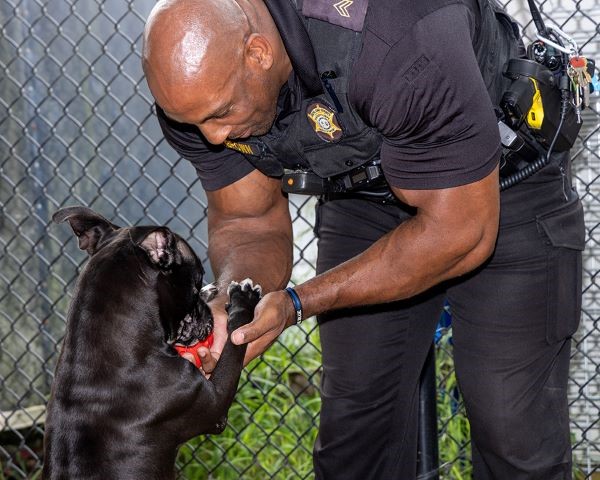
(Photo courtesy of the Richland County Sheriff’s Department.)
Conversely, some officers harp on the lack of time to hit the gym and work out or even exercise at home. Fatigue is often mentioned as a job-related contention—whether 8, 10, or 12 hours long, the shift can be draining, especially in urban centers and metropolis municipalities (“The city never sleeps”) where cops go from call to call, unrelentingly.
In the police academy training phases of my law enforcement career, I was never in any better physical shape: life was solid. The red-shirted drill instructors were always on their game…which is how all recruits were indoctrinated to be as sworn officers. Did every cadet meet muster and graduate from the academy? No.
Three recruits from my class of 32 dropped out, citing physical demands as their nemesis.
Albeit seemingly harsh (for the right reasons), the drill instructors cut no one any slack regarding physical performance. Even emotionally. When it came to defensive tactics and ground fighting (on mats), instructors boisterously emphasized physical conditioning rituals. No cocooning was tolerated.
Instructors are in your face…just like a bad guy who defies law and order.
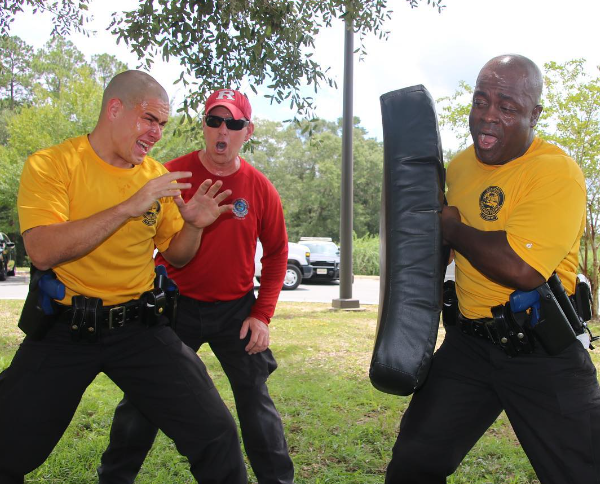
(Photo courtesy of the Florida Highway Patrol Training Unit.)
Recently, I came across a law enforcement forum dedicated to prospective police recruits asking questions in preparation for the physical aspects of the pre-hire process (trying out and succeeding in the physical examination components). A non-traditional (older) male prospect asked if his lack of running and general dislike for exercise would hinder his efforts to make the grade and enter the academy. Sometimes the question is the answer.
One of many respondents derided the sedentary-sounding “aspirant,” calling the query “fishy.” I agree.
Others seemed to relate to the inquirer, mentioning how they wish their local academy would lower standards to “help” fill long-vacant law enforcement positions, making it “easy” to “get on the force.” It is disheartening to think it is possible to succeed in a police academy via Obama-favored philosophies, including allowing former drug use, not just “experimentation,” waived to get a foot in the door and pin a justice badge. Lord, help us!
Back to reality: almost unanimously, law enforcement academies strive to attract, vet, select, and thoroughly train the best of the best.
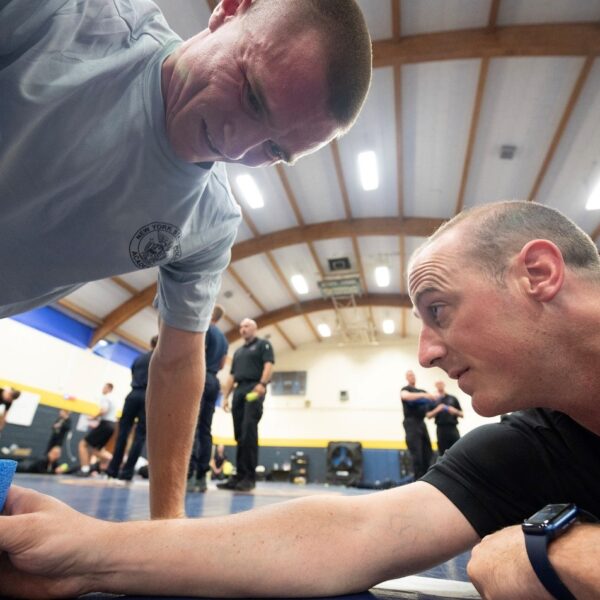
(Photo courtesy of the New York State Police Academy.)
Given the anti-police climate metaphorically handcuffing cops by outlawing or policy-banning traditional methods of cops mitigating folks who foolishly insist on resisting and fighting actions of arrest, martial arts training is being increasingly considered in police academy training components.
Although traditional principles in America’s law enforcement training institutions harped on maintaining distance and the use of less-lethal weapons (OC spray, Taser, baton) instead of close-quarter confrontations, sometimes it just winds up in hands-on engagements, requiring utmost physical stature…or getting tossed around like a rag doll due to negated conditioning.
Brazilian jiujitsu is making strides in police academies and local gyms alike, with martial arts-skilled LEOs developing courses, training other cops to be more physically and mentally dialed in to effectuate de-escalation and bring feisty matters to swift conclusion without injury to anyone, facilitating successful arrests of suspects.
From my findings, more cops are gravitating to the mats, sharpening skills for deployment out in the field.
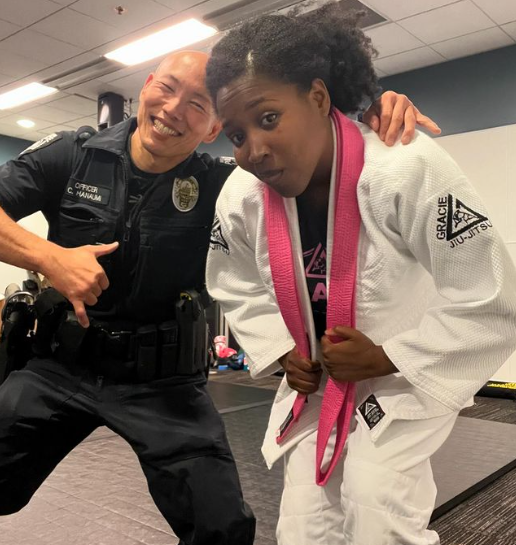
(Photo courtesy of Bellevue Police Officer Craig Hanaumi.)
For example, Bellevue Police Officer Craig Hanaumi possesses super skills in martial arts and shares his philosophies and field experiences with other LEOs, not only offering jiujitsu techniques but also tried/tested faculties in real-time grappling with suspects…namely emphasizing that all the police equipment on the duty belt must be heeded:
“Almost every technique I’ve successfully done on the mats I’ve also tried on blacktop or tile floors to confirm that it is possible on hard surfaces. While wearing the uniform, torso flexion from the vest and belt is greatly reduced.
“Retentions [belt-keepers] get inadvertently released, the soles of your boots get caught on loose clothing, and stuff in my pockets falls out.
“I like to keep the back of the belt clear because having stuff positioned there will hurt if you ever end up on your back.”
I can vouch for that kind of ouch!
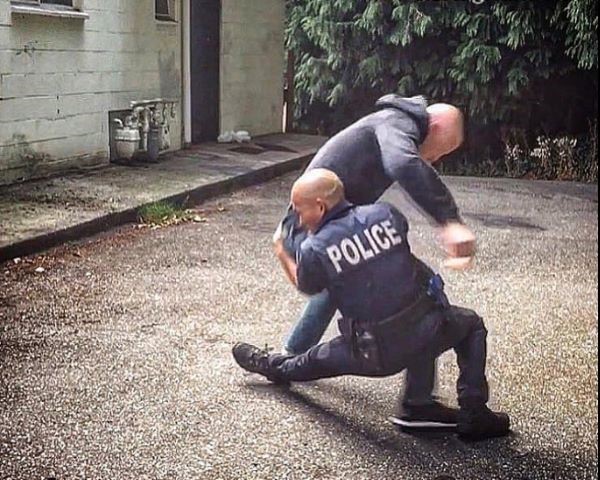
(Photo courtesy of Bellevue Police Officer Craig Hanaumi.)
Officer Hanaumi continued his assessment: “I noticed this takedown works better when I’m on the right side. Doing it on the left makes my holster dig into my hip, and it is uncomfortable at best and quite painful at worst. Good to know.”
Indeed, good to know!
The duty belt hardware aspects are just as imperative as the physical attributes comprising cops with stellar skillsets to get the job done…without injury to themselves or others.
As a midnight-shift squad-mate always said to influence hitting the police HQ gym, “Let’s keep tuned up and dialed in!”
Speaking of being dialed in, I have been researching martial arts implementations in law enforcement training and compiling material on the topic. Stay tuned!
Make a difference. Support the NPA.



